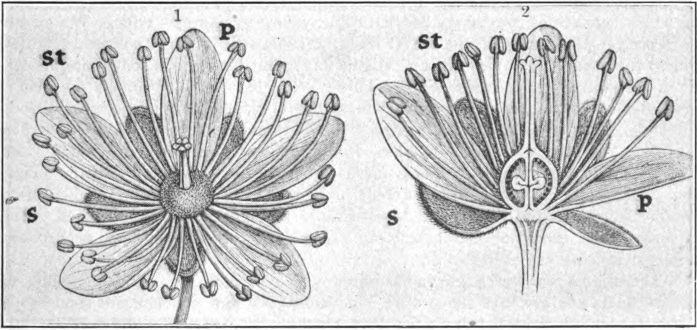CHAPTER I
THE STRUCTURE AND ROLE OF THE FLOWER
The Organs of the Flower — The Role or Function of the Flower Is to Secure Pollination—The Advantages of Cross-Fertilization — Plants Multiply Readily by Vegetative or Assexual Methods — Sex was Developed to Secure Variation — The Importance of Variation in the Evolution of Plant Life.
A knowledge of the structure of the flower, of its role or purpose, of the advantages of cross-fertilization, and of the object of sex among plants should form a part of the education of everyone. Undoubtedly the influence of flowers upon the development of the human race has been both profound and far-reaching. We can not imagine what this world would have been without them, or estimate the enjoyment that would have been lost, or the power for good that would have been forever missing. But the ministry of beauty is not the only service rendered by flowers, for they are also of practical importance as the sources of honey and the producers of fruits, vegetables, and cereals. The beekeeper, fruit-grower, and farmer who understand their structure and economy will be protected from many costly errors, and will be able to obtain results that otherwise would be impossible.
Select some common insect-pollinated flower, as a rose, buttercup, or bass-wood blossom, for examination, and notice that it consists of many small thread-like organs surrounded by two whorls of leaves (Fig. 1). The outer circle of leaves is green and forms the calyx or cup, each leaf of which is called a sepal
